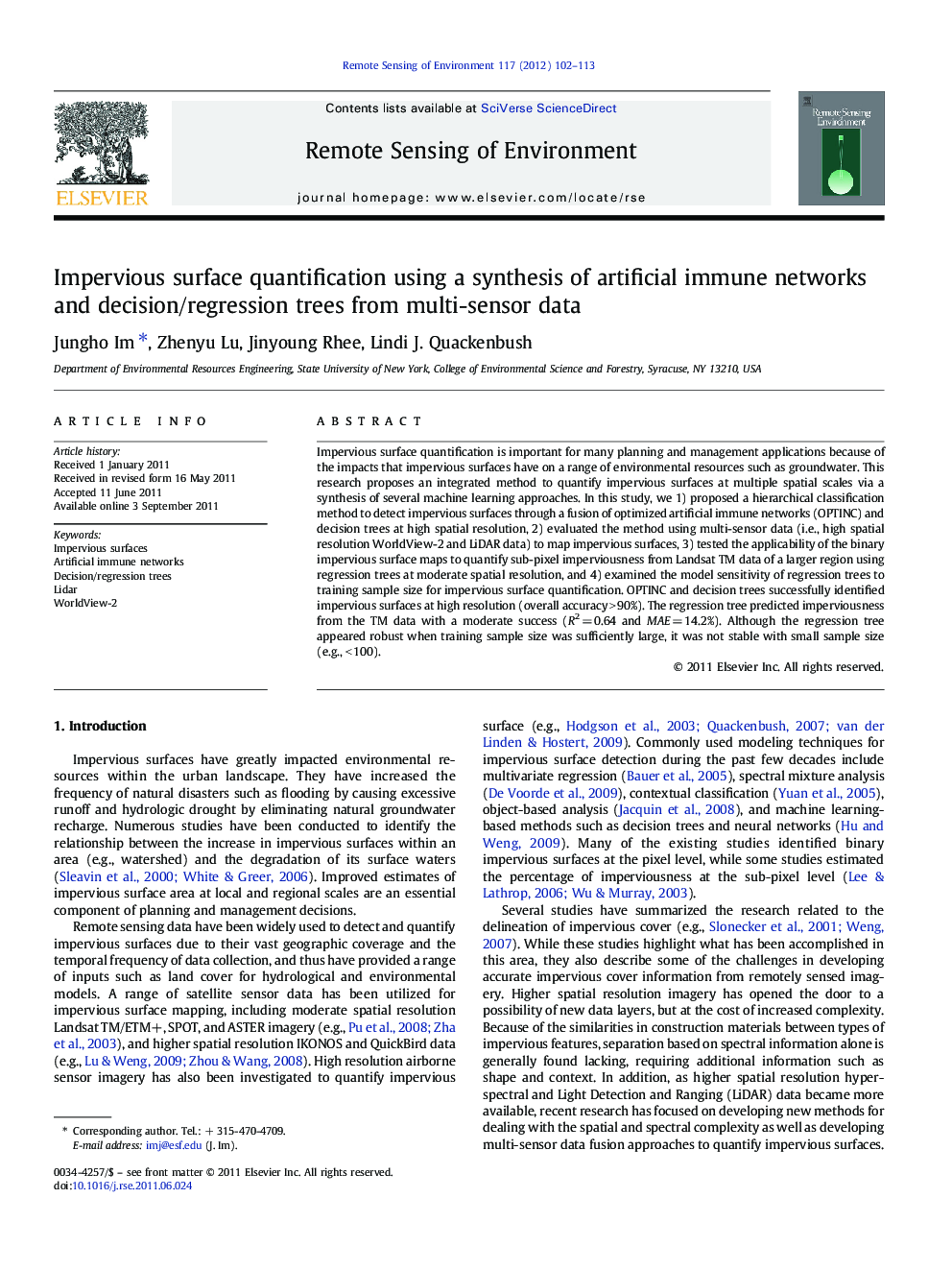| Article ID | Journal | Published Year | Pages | File Type |
|---|---|---|---|---|
| 4459256 | Remote Sensing of Environment | 2012 | 12 Pages |
Impervious surface quantification is important for many planning and management applications because of the impacts that impervious surfaces have on a range of environmental resources such as groundwater. This research proposes an integrated method to quantify impervious surfaces at multiple spatial scales via a synthesis of several machine learning approaches. In this study, we 1) proposed a hierarchical classification method to detect impervious surfaces through a fusion of optimized artificial immune networks (OPTINC) and decision trees at high spatial resolution, 2) evaluated the method using multi-sensor data (i.e., high spatial resolution WorldView-2 and LiDAR data) to map impervious surfaces, 3) tested the applicability of the binary impervious surface maps to quantify sub-pixel imperviousness from Landsat TM data of a larger region using regression trees at moderate spatial resolution, and 4) examined the model sensitivity of regression trees to training sample size for impervious surface quantification. OPTINC and decision trees successfully identified impervious surfaces at high resolution (overall accuracy > 90%). The regression tree predicted imperviousness from the TM data with a moderate success (R2 = 0.64 and MAE = 14.2%). Although the regression tree appeared robust when training sample size was sufficiently large, it was not stable with small sample size (e.g., < 100).
► We propose a method to quantify impervious surface via an algorithm synthesis. ► We propose a hierarchical classification method using OPTINC and decision trees. ► We investigate the usability of WorldView-2 and LiDAR data for classification. ► We develop a multi-scale impervious surface quantification procedure. ► We examine sensitivity of Cubist regression trees to training sample size.
